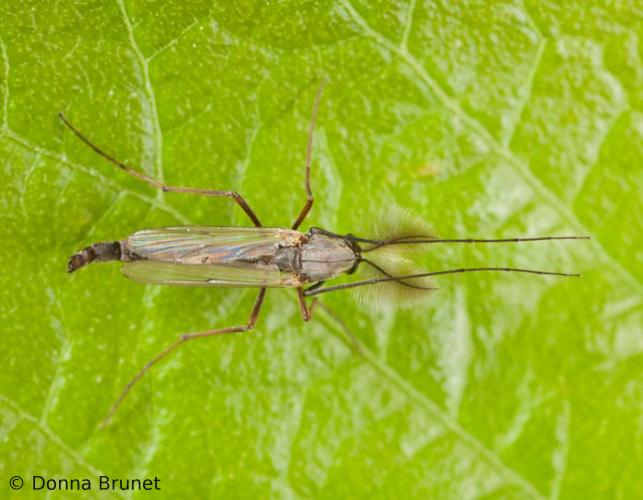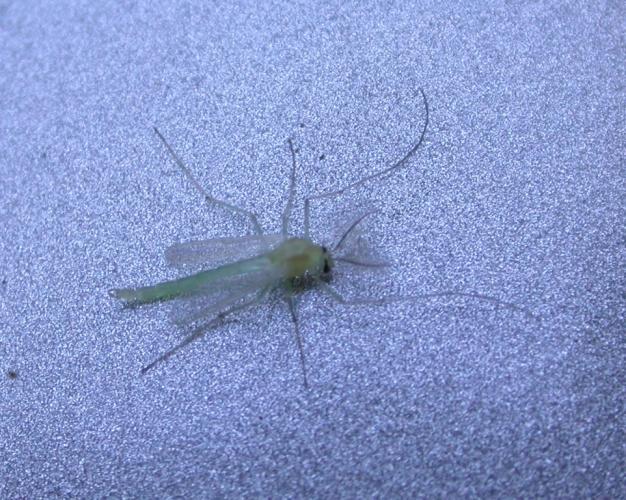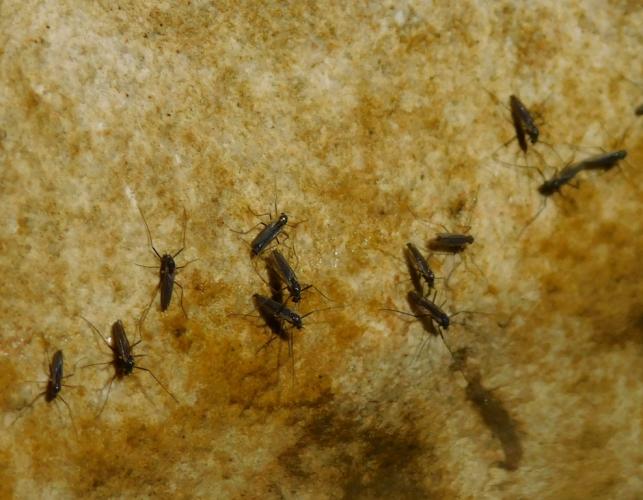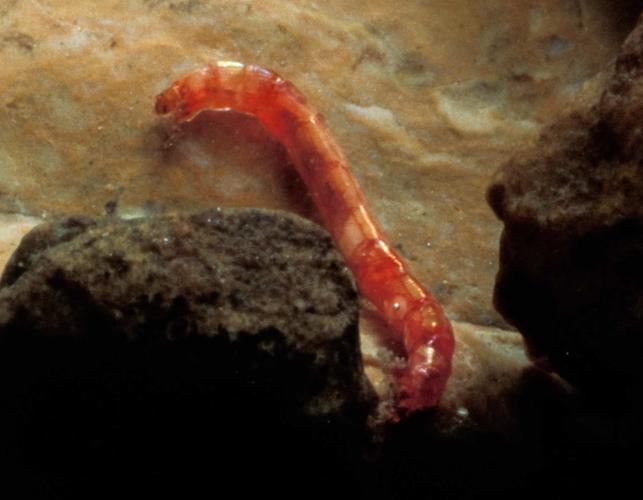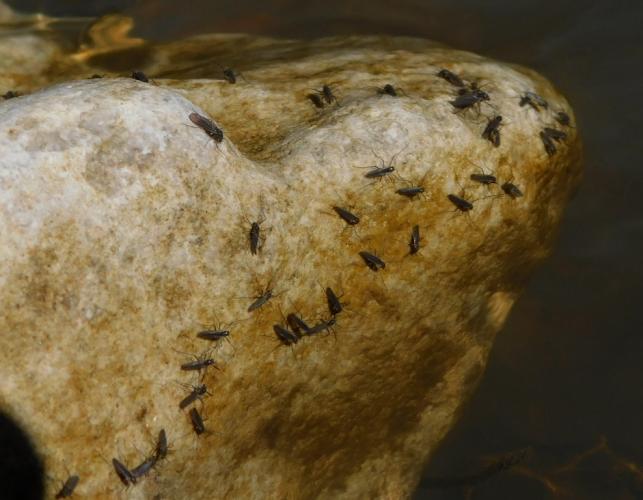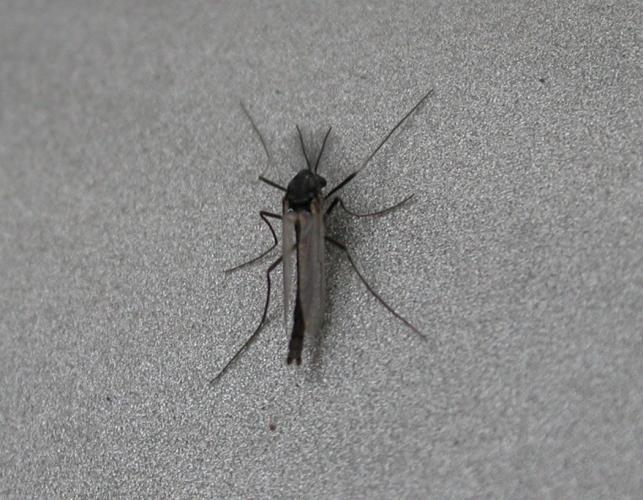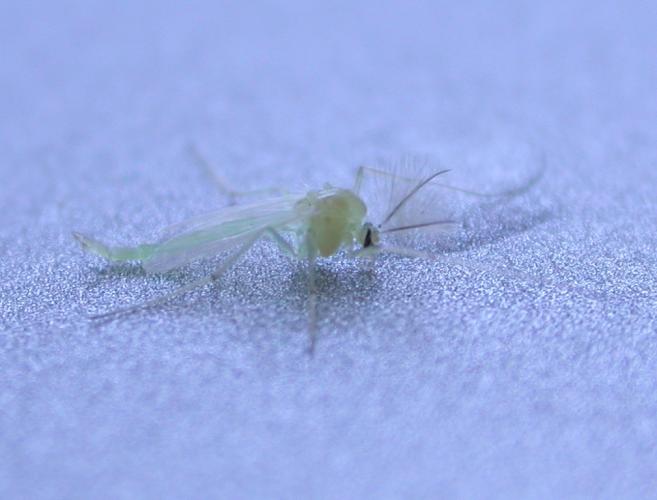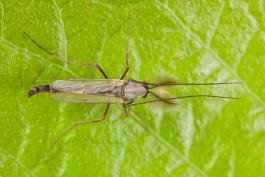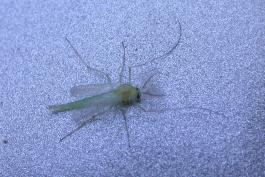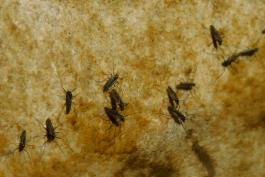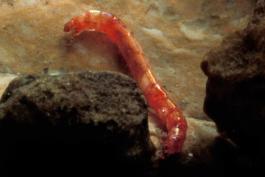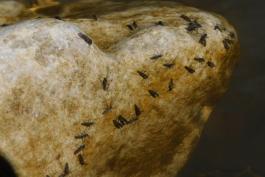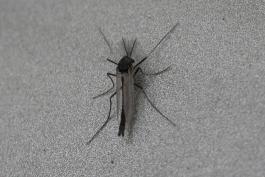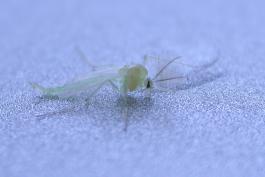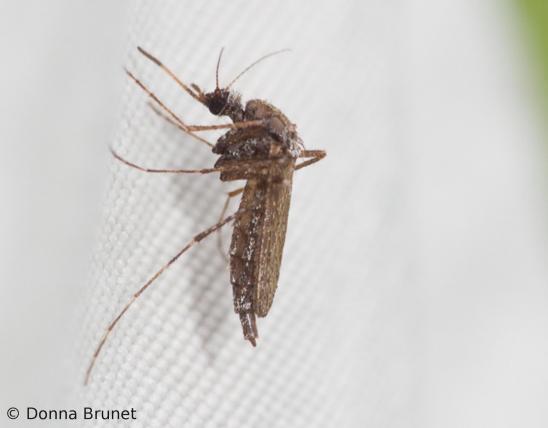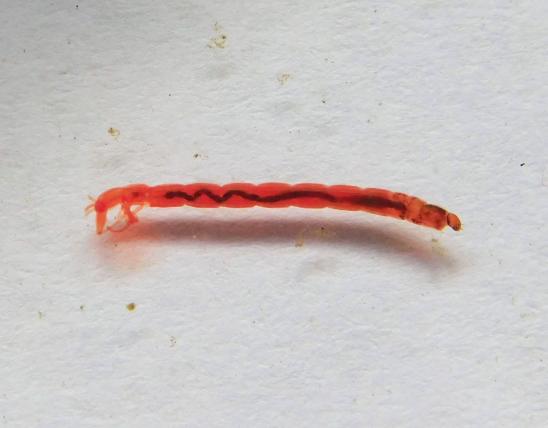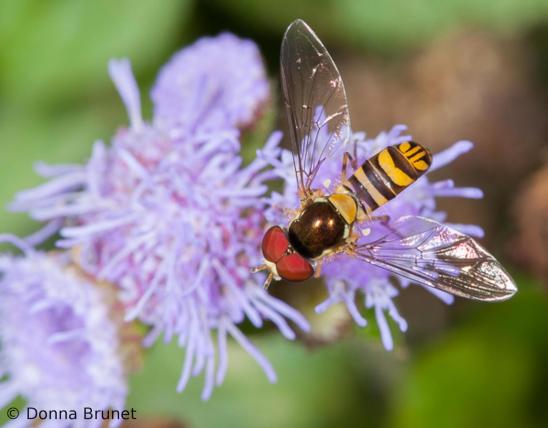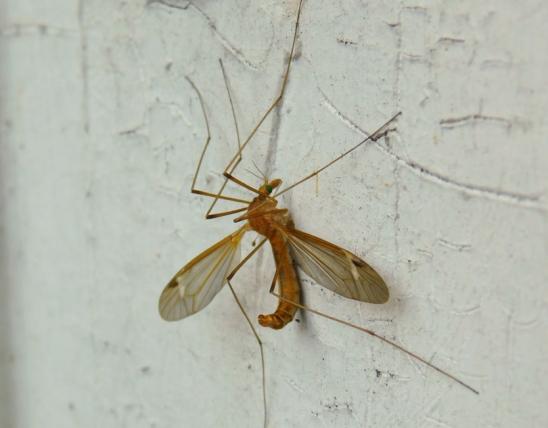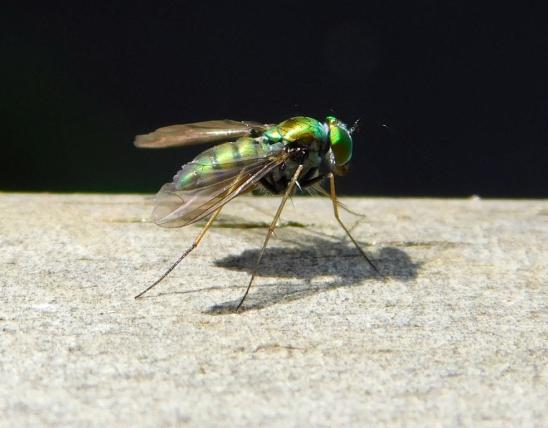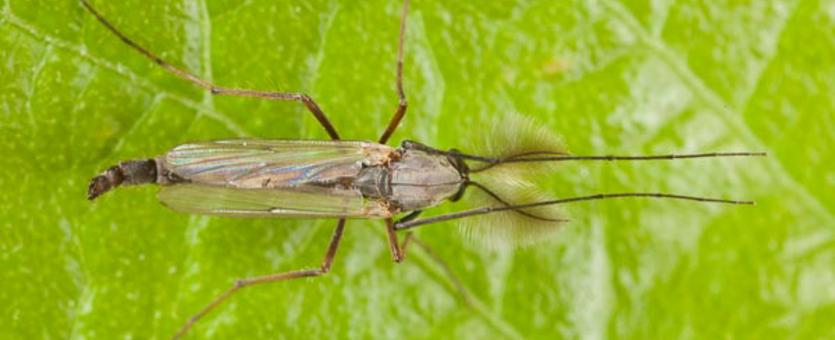
Being true flies, midges (in the family Chironomidae) have only one pair of wings. They look a lot like mosquitoes: small and dainty, rather soft-bodied, with long, narrow wings and long, skinny legs; males often have feathery antennae, used for sensing the high-pitched sounds of female wings. Unlike mosquitoes, midges, at rest, tend to hold their first pair of legs forward and upward (while many mosquitoes, at rest, hold their hind legs outward and upward). A midge's up- and outstretched forelegs can resemble antennae, at a glance. The tarsi ("foot" portion) of the forelegs, in many midges, is very long. Midges lack scales on their wings (while mosquitoes' wings do have scales). Fine details of anatomy, including wing venation, are important for identifying midges beyond the most basic groups (tribe, subfamily, or genus).
The larvae of many midges are called bloodworms, for they are red from the hemoglobin molecules within their narrow bodies. They live at the bottom of lakes, ponds, and other aquatic habitats and often construct tubes from fine sediment and mucus.
Similar species: In addition to mosquitoes, there are other entire families of flies that look similar: the biting midges or "no-see-ums" (Ceratopogonidae), the black flies (Simuliidae), the phantom midges (Chaoboridae) (named for their see-through, swimming wormlike larvae), the meniscus or dixid midges (Dixidae) (named for the U-shaped position their larvae assume while resting at the water's meniscus, the "bend" that water makes at its edges), and more. Some people confuse crane flies with mosquitoes and midges, plus there are less closely related flies that have long legs and long, narrow wings, too.
Length: Most are less than ⅜ inch long.
Statewide.
Habitat and Conservation
Midges are common in places near water, since that is where they live as larvae, where they emerge as adults, and where mated females must deposit their eggs.
Males, however, are famous for gathering into big swarms that "dance" together in the air. Often, these cloudlike swarms congregate in the early evening, when the sun is getting low, and often they form just above some tall object or other marker — above a bush, on a hilltop, over a pool or other water, over a church steeple, above a dark object, or even above a person!
These "top swarms" of males appear to form not out of an instinct to join together but simply out of a consensus about the best place to hang out. Each midge flies upwind to the farthest edge of the marker zone, then allows itself to drift gradually to the downwind side, then flies back upwind to the other extreme. It is as if all the individuals in the group are tied, like tiny balloons, to the marker.
Food
Most of the midge life cycle is spent in larval stages, usually at the bottom of a pond or other body of water, where they eat a variety of organic materials, mostly as scavengers, though a few are predatory of other small invertebrates.
Adult midges, unlike mosquitoes, typically have a short proboscis (mouth tube), and they do not bite people. In fact, midges rarely eat anything as adults and only live for a few weeks at most. If they take anything, it may be moisture or sweet water: honeydew from the hind end of aphids, flower nectar, juices of rotting fruit, or sugar water set out by insect enthusiasts to attract interesting insects!
Status
Chironomid midges are harmless to people.
Globally, more than 7,300 species in this family have been described scientifically. Midges, mosquitoes, and others in their broad subgroup of flies may be the most ancestral or ancient types of flies.
Life Cycle
As larvae, most midges live at the bottoms of ponds, lakes, and other aquatic habitats. Some species live in other types of moist places (damp soil, rotting plant material, and so on). Most are scavengers and spend 1 to 3 years as larvae.
As an adult, a midge may live only a few weeks.
Although adult males are famous for joining together in swarms, this behavior is not necessarily a "mating dance." Females are rarely found in the swarms; apparently when one happens by, a male soon finds her and mates with her. Some researchers suggest the males' swarming is an end unto itself, a ritual. People rarely take note of midges when they are solitary and not swarming. It could be that the males' swarming causes many unrelated individuals to gather in one spot, scrambling the genetic strains from across a wide area, lowering the possibility of inbreeding.
Human Connections
The family name, Chironomidae, is derived from a Greek word for "pantomimist" — someone who pantomimes — apparently for the fly's typical posture of having its forelegs held out in front of its body.
Males of many midges and mosquitoes respond to the unique sound frequency of the females' wingbeats for their species. Observers have discovered that singing a particular musical note, clapping one's hands, or making other sudden noises can cause an entire swarm of these flies to suddenly leap upward at once, or draw them nearer the sound, or cause wild disarray in their dancing. Next time you see a swarm of midges dancing in a shaft of early evening sunlight, clap your hands or whistle some notes, and see what they do.
Old-time Ozarkers used to use the term "gnat-ball" for a dense swarm of midges.
Ecosystem Connections
Midges, as larvae and adults, provide an abundant food source for a large variety of animals. Dragonflies, for example, often fly repeatedly through midge swarms, capturing midges with each pass.
An oft-cited fact has it that "certain gnatlike midges" beat their wings more than 1,000 cycles per second (Hz), making them perhaps the fastest wingbeats in the world. Apparently these "midges" are in genus Forcipomyia, in a different (but related) family, the biting midges. Within the common midge family, however, the wingbeat frequency is more like a "mere" 650 to 700 Hz. These super-fast wing movements, hovering, and other aerodynamic feats are possible because of the fly order's asynchronous muscle systems (where there's not a direct correlation between each muscle contraction and a wing flap; instead, the muscle contractions cause changes in the shape of the thorax, causing the wings to beat incredibly fast).
One midge species, at ¼ inch long, is not only the only insect endemic to Antarctica but also its largest entirely terrestrial animal.
